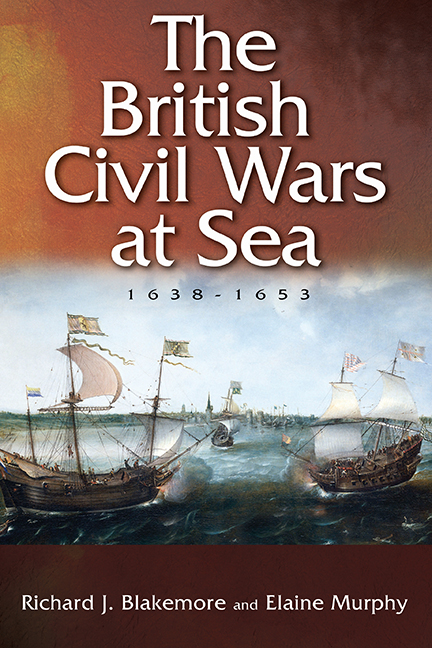Book contents
- Frontmatter
- Dedication
- Contents
- List of Illustrations
- Preface and Acknowledgements
- List of Abbreviations
- Map
- Introduction
- 1 Warfare at Sea in the Early Modern Period
- 2 The Outbreak of War, 1638–1642
- 3 The War at Sea, 1642–1646
- 4 Parliament's Navy, 1642–1646
- 5 Royalist, Confederate, and Scottish Naval Efforts, 1642–1653
- 6 Revolution, 1647–1649
- 7 Conquest, 1649–1653
- Conclusion
- Appendix 1 Timeline of the Civil Wars at Sea, 1638–1653
- Appendix 2 Parliamentarian Fleets, 1642–1649
- Bibliography
- General Index
- Index of Ships
4 - Parliament's Navy, 1642–1646
Published online by Cambridge University Press: 19 July 2019
- Frontmatter
- Dedication
- Contents
- List of Illustrations
- Preface and Acknowledgements
- List of Abbreviations
- Map
- Introduction
- 1 Warfare at Sea in the Early Modern Period
- 2 The Outbreak of War, 1638–1642
- 3 The War at Sea, 1642–1646
- 4 Parliament's Navy, 1642–1646
- 5 Royalist, Confederate, and Scottish Naval Efforts, 1642–1653
- 6 Revolution, 1647–1649
- 7 Conquest, 1649–1653
- Conclusion
- Appendix 1 Timeline of the Civil Wars at Sea, 1638–1653
- Appendix 2 Parliamentarian Fleets, 1642–1649
- Bibliography
- General Index
- Index of Ships
Summary
Parliament's maritime forces have attracted considerable attention from historians, with particular interest in political and administrative developments within the navy, overall strategy, and military impact. For the most part these scholars have concluded that, although there were no major seaborne engagements on the same scale as the battles on land, the navy played an important role in protecting trade (and therefore customs revenues), interrupting the shipping of arms to royalists, and preventing foreign intervention, as well as supporting coastal garrisons. The impression of overwhelming parliamentarian strength at sea has been corrected by research into the activities of royalist and Irish privateers, but nevertheless control of the navy contributed to parliament's eventual victory in the first civil war. As Bernard Capp noted, had Charles I possessed the naval strength to blockade London, the war could have ended considerably sooner as parliament's war machine would probably have ground to a halt. Indeed, the navy's main significance for parliament may well have been in defending London, the Thames, and maritime trade to the capital. At the same time, the Thames and Medway were the site of England's major naval bases, and – as discussed in Chapter 2 – parliament's success in taking control of the navy depended upon mobilising support amongst the capital's seafarers. Parliament relied upon the navy to protect London, while at the same time they relied upon London to support the navy. In a similar way to their land forces, parliament utilised existing military structures, but expanded and (to some extent) reformed them for the demands of civil war. This chapter will first examine the purposes for which parliament used the navy, before turning to naval administration and politics, and then the various ranks of naval personnel. Finally, we will look at the considerable auxiliary maritime forces mobilised by parliament.
Defence and authority
At times, as discussed in the previous chapter, the fleet was pivotally important to the course of the land war. In 1643, the navy supplied both Plymouth and Hull by sea while these towns resisted a royalist siege; in 1644 the earl of Warwick commanded naval forces supporting the besieged port of Lyme, and in the same year the Irish squadron under Richard Swanley was instrumental in rescuing parliamentarian fortunes in Pembrokeshire.
- Type
- Chapter
- Information
- The British Civil Wars at Sea, 1638–1653 , pp. 84 - 107Publisher: Boydell & BrewerPrint publication year: 2018

